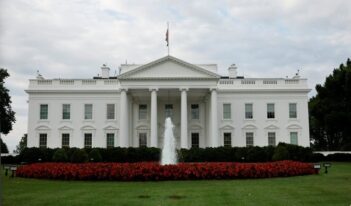
The normative foundations of the value of statistical life render it an insufficient tool to analyze pandemic-related policies.
The value of statistical life (VSL) is the keystone of benefit-cost analysis (BCA) applied to fatality risks. Federal agencies, which are required to conduct a BCA before issuing regulations, value the risk-reduction benefits of those regulations using VSL. VSL has also become a centerpiece of the rapidly emerging literature on social distancing policy to mitigate COVID-19.
Yet VSL rests on shaky normative foundations. Scholars and citizens need to grapple with the normative case for VSL. I suggest that this case is weak.
BCA evaluates policies by summing the monetary amounts that individuals are willing to pay (if they are better off with the policy) or willing to accept (if worse off). VSL is best understood as a conversion factor for translating fatality-risk reductions into monetary values. These monetary values may not be exactly equal to an individual’s willingness to pay but are a good approximation for a small risk change. For instance, if an individual has a VSL of $8 million, she is willing to pay approximately $8 for a one-in-one million reduction in her fatality risk, $80 for a one-in-100,000 reduction in her fatality risk, and so forth. In economic language, VSL is the “marginal rate of substitution” between survival probability and income or wealth.
VSL is heterogeneous. What someone is willing to pay for risk reduction will depend upon that person’s income, age, and other characteristics. Federal agencies, however, do not employ heterogeneous VSL, but rather use a single, population average value.
Why should analysts use VSL as the measure of the value of fatality-risk reduction?
One normative criterion that can be used to assess VSL is the Kaldor-Hicks efficiency criterion. Kaldor-Hicks efficiency is the standard justification for BCA. If a policy is scored by BCA as an improvement over the status quo—that is, if the sum total of willingness to pay of those better off exceeds the sum total of willingness to accept of those worse off—then there is a lump sum transfer of money from the former to the latter which would make everyone better off.
The Kaldor-Hicks criterion is itself debatable. It is the traditional normative story behind BCA, however, and so it offers one perspective on VSL. The difficulty is that even heterogeneous VSL—a VSL equaling an individual’s marginal rate of substitution between survival probability and income or wealth—is only an approximation to that individual’s willingness to pay for a risk reduction. This approximation becomes poorer as the risk reduction becomes larger.
In a recent paper on COVID-19 policy, I calculated the VSL and willingness to pay for a hypothetical 50-year-old individual with an annual income of $60,000. I assumed this individual faced the United States’ survival curve—that is, the average chance of dying for each year of life—with survival chances in 2020 lowered by one percent to capture the risk of dying from the pandemic with no social distancing policy in effect. Such an individual would have a VSL of $9 million, so that her VSL-based monetary value of a one percent risk reduction is $90,000. Yet her willingness to pay for that reduction is only $47,000.
Population average VSL is generally not a good approximation of an individual’s willingness to pay even for a small risk change. For example, if an individual’s VSL is $5 million, and the population average is $10 million, the individual is willing to pay approximately $50 for a one-in-100,000 risk reduction, and yet his imputed monetary value using the population average is $100.
Does it actually matter for policy purposes that VSL can deviate from willingness to pay?
Yes, it does. In my paper, I also report results from a simulation model based on U.S. data in which a hypothetical population, divided into different age-income cohorts, faces a baseline COVID-19 risk, with older cohorts at greater risk. At the outset of the pandemic, government can choose social distancing policies of various degrees of stringency. The cost of social distancing is lost gross domestic product (GDP)—meaning lower income for individuals—while the benefit is reducing the COVID-19 risk. A one percent reduction in GDP will reduce the COVID-19 risk by a certain amount, a 2 percent reduction by a greater amount, and so forth. I assume that an 80 percent reduction—which means a draconian, protracted lockdown—wholly eliminates the COVID-19 risk.
In this simulation model, BCA using VSL, whether heterogeneous or population average, indicates that any reduction in GDP up to 80 percent is an improvement over the baseline of no social distancing. And yet, reductions of GDP by 37 percent or more are not Kaldor-Hicks efficient relative to the baseline.
Kaldor-Hicks efficiency offers one normative lens on VSL. A different lens is offered by the concept of a social welfare function (SWF). Although BCA evaluates policies by summing up monetary amounts, the SWF framework translates policy impacts on individuals into interpersonally comparable well-being numbers, or “utilities,” which can be derived from information about individuals’ preferences.
There are a variety of possible rules for assessing policies in light of individual utilities. One such rule is the utilitarian SWF, which evaluates policies by summing up utilities. A different rule is a “prioritarian” SWF, which plugs utilities into a concave transformation function—the effect of which is to give extra weight, or priority, to the worse off.
In previous scholarship, my coauthors and I have demonstrated that the recommendations of utilitarian and prioritarian SWFs with respect to fatality-risk policy are different from those of VSL. This finding is confirmed by my paper on COVID-19 policy. The optimal social distancing policy, as determined by either the utilitarian or the prioritarian approach, is significantly less stringent than the optimal policy under BCA using either a heterogeneous VSL or a population average VSL. This variance occurs because higher-income individuals have VSLs that are skewed upward by the diminishing marginal utility of money.
VSL is a familiar tool, but it lacks a firm normative foundation. Federal agencies and scholars engaged in policy assessment should shift away from Kaldor-Hicks efficiency and BCA to the SWF framework as the core assessment tool. This is, to be sure, a radical suggestion. For those who favor BCA, a less radical response to the limitations of VSL would be to calculate actual willingness to pay for affected individuals.
Heterogeneous VSL can be used as the starting point for this calculation, keeping in mind that it is only an approximation. The use of population-average VSL, though, has no normative justification—neither from the perspective of Kaldor-Hicks efficiency nor when viewed through the lens of the SWF framework.
This essay is part of a series entitled Analyzing COVID-19 Policymaking.




